Cycle Usage Statistics in Netherlands
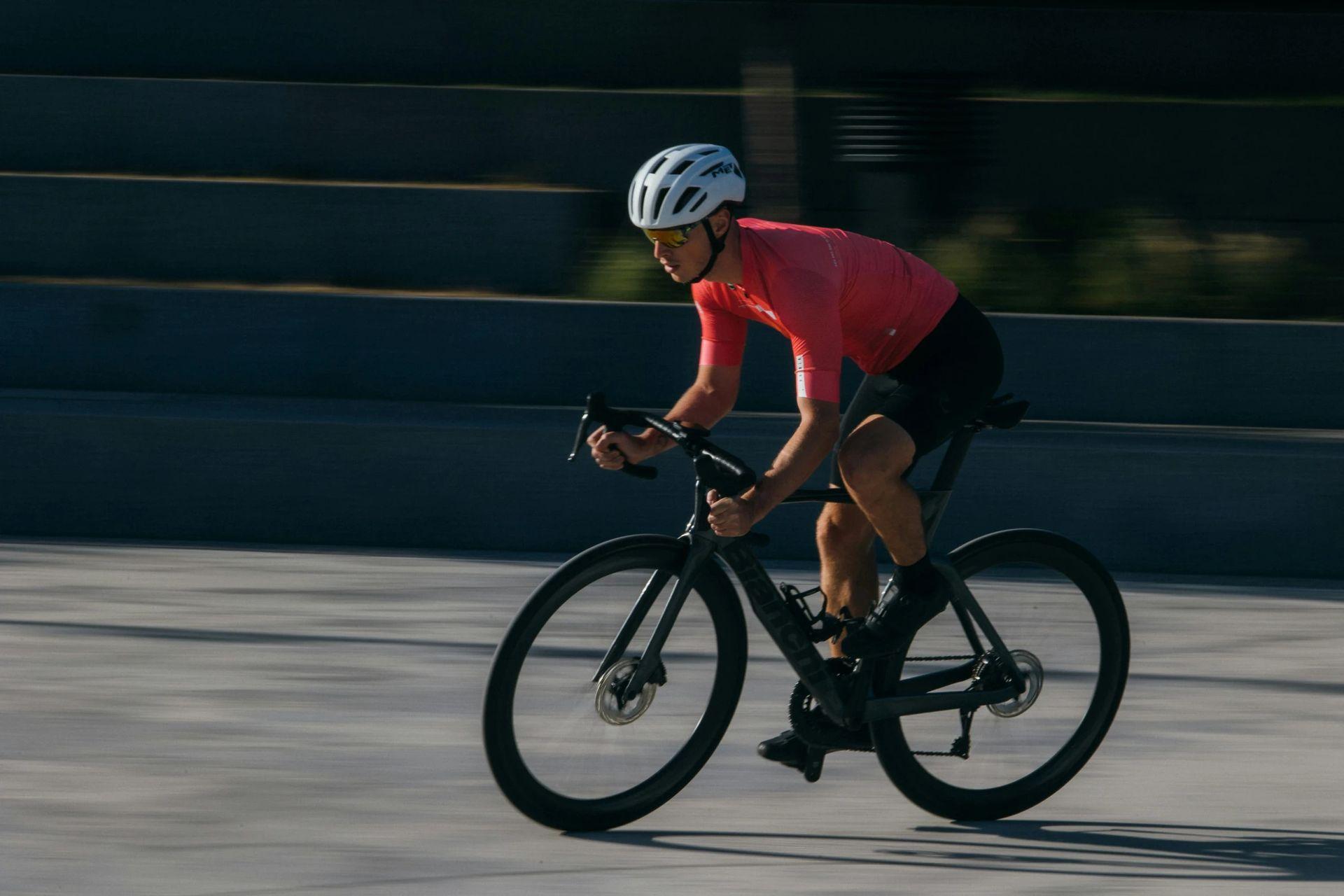
How often do the Dutch really ride their bikes? Let's explore the cycling habits of the Netherlands, a country famous for its cycling culture [1]. In 2020, people aged 6 and up took their bikes out for an average of 4.4 trips each week. This shows how deep cycling is in their culture. But there's more to learn about the Netherlands' bike use.
Key Takeaways
The 12 to 17-year-olds cycled the most, averaging 32.9 kilometers per person per week1.
People aged 65 to 74 cycled an average of 24 kilometers per week in 20201.
Students and pupils rode their bikes almost 7 times a week and cycled more than 22 kilometers per person during such week1.
The Dutch cycling network consists of 153,000 kilometers of paths and roads, equivalent to 3.8 times the distance around the planet2.
The modal share of cycling in the Netherlands has been stable at 27% of all trips for the past three decades3.
The Dutch Cycling Culture
The Netherlands is known as the world's top cycling spot, where bikes are a big part of getting around and the culture [4]. About 25% of daily trips are by bike, with 4.5 billion bike trips and 15.5 billion kilometers traveled each year [4]. This love for cycling shows in fact there are 23 million bikes, more than the 17 million people living there, with 2 million e-bikes [4].
Netherlands: The Bicycle Nation
The Dutch have loved cycling for over a century, starting in the early 1900s with more bikes per person than any other European country [5]. By 1911, they had the most bicycles, and by 1940, four million bikes for eight million people [5]. Today, cycling is a big part of life, with over a quarter of trips by bike and up to 46% in cities like Zwolle [5].
The country's bike-friendly roads and rules have helped make cycling popular, with a 37,000km network for exploring [6]. Since the 1970s, cycling has been seen as a green way to get around, thanks to the Stop de Kindermoord campaign [6].
Bicycles Outnumber Residents
The Netherlands really values cycling, with more bikes than people [4]. With 1.3 bikes per person, everyone can easily find a bike to use [6]. This shows the strong cycling culture and the great bike support system.
The Dutch cycling scene welcomes everyone, offering many bike types for all abilities [6]. Companies like Veloretti make top-quality e-bikes that enhance the cycling experience in the Netherlands [6]. The Swapfiets program also supports sustainability by encouraging long-term bike use and fixing bikes to keep cyclists moving [6].
Bicycles Account for 25% of Daily Mobility
In the Netherlands, bicycles are a big part of daily travel, making up 25% of all trips [7]. This is way more than in countries like Germany, where cycling is only 10% of daily trips [7]. The Dutch government puts over €600 million each year into bike paths and other cycling projects [7].
Distribution of Trips by Travel Mode
Bicycles are a top choice for getting around in the Netherlands, after cars [8]. For trips under 7.5 kilometers, 35% of people choose to bike [8]. Even for longer trips between 7.5 and 15 kilometers, 15% still pick the bike [8].
Purpose of Bicycle Trips
People in the Netherlands use their bikes for many things, like going to school or work, and shopping [8]. With 70% of trips under 7.5 kilometers, biking is seen as a smart and easy way to get around [8].
The Netherlands is a big supporter of cycling, with people biking about 1,000 kilometers a year on average [7]. This is much more than in Germany, where it's about 300 kilometers a year [7]. Thanks to its focus on cycling, the Netherlands leads the world in green city travel [7].
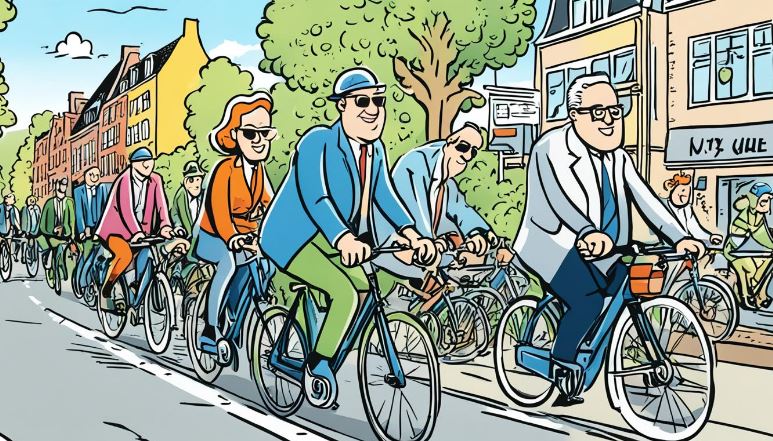
Trends in Bicycle Usage
The Netherlands is a top spot for cycling, with a deep history and culture of biking. Over the last ten years, the use of bicycles has grown a lot in the country. This growth is thanks to many factors [9].
Growth Since 2005: More Cyclists, Longer Distances
Since 2005, the Netherlands has seen a 12% increase in bicycle use, by kilometres travelled [9]. This rise is due to more people cycling and taking longer trips [9].
Increased Use for Work, Education, and Leisure
More people are using bicycles for work, education, and fun trips. E-bikes have become more popular, making cycling easier for everyone [10].
But, shopping trips by bike haven't gone up much. This shows the Dutch still use other ways to get around for some tasks [11].
The Netherlands is big on sustainable transport, with over 35,000 km of bike paths. This is more than its roads, which are 140,000 km long [9]. This shows how much the country values cycling.
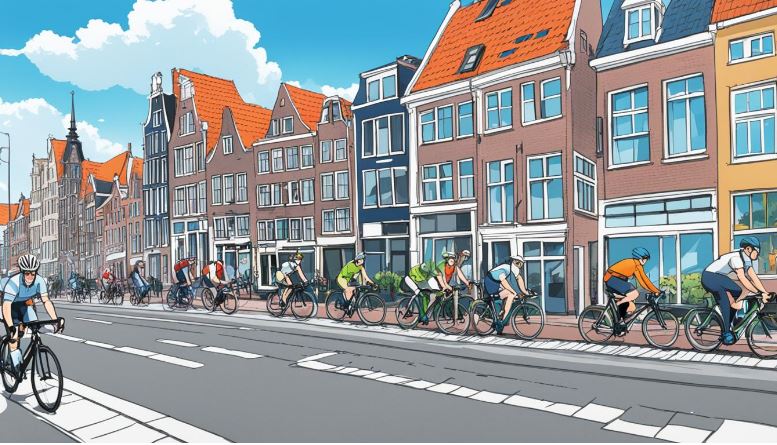
Cycling in the Netherlands is more than just getting around. It adds €1.2 to €3.8 billion to the economy and supports 13,000 jobs [9]. The government aims to get 100,000 more people commuting by bike in the next two and a half years [9].
The Netherlands' cycling success is making other places take notice. For example, Seville, Spain, has seen more cycling after improving its bike paths [9].
Metric | Value |
Cycling trips as percentage of total trips in the Netherlands | 26% [11] |
Cycling trips up to 7.5 km in the Netherlands | 34% [11] |
Cycling trips between 7.5-15 km in the Netherlands | 15% [11] |
Cycling trips for education/study purposes in the Netherlands | 50% [11] |
The e-bike is changing the Dutch cycling scene. Even though bike sales dropped by 6% from 2022 to 2023, e-bikes are growing fast. They're expected to sell over 1 million units soon [10].
The Netherlands leads in sustainable transport with its cycling trends. Its success shows how active mobility can change cities for the better [9,10,11].
Urban and Rural Cycling Patterns
The Netherlands is a top spot for cycling, with many people choosing to ride bikes [12]. But, the way people cycle changes a lot between cities and countryside. More people are cycling in cities, but fewer in rural areas as people move to cities [12].
Rising Bicycle Use in Cities
In cities like Amsterdam, with lots of people living close together [13], more people are riding bikes. This is seen in how many trips to work are made by bike [12]. But, not all cities see more cycling, with some having fewer bike trips [12].
What makes cities good for cycling includes how dense they are, how diverse they are, and how well they are designed for bikes [12]. Who you are, like your age and gender, also affects how much you cycle [12].
How long people cycle in cities can depend on the city's size. In small cities, having more streets and addresses doesn't make cycling better [14]. Also, having more bus stops helps with cycling time in small cities but not in big ones [14].
The Netherlands is really into making cities bike-friendly with policies and building bike paths [12]. This has made more people cycle in cities [12]. This has made more people cycle in cities, as they learn how to get into cycling and embrace its numerous benefits. As the country keeps focusing on green transport, cycling in cities will likely change more, offering lessons for other countries [12].
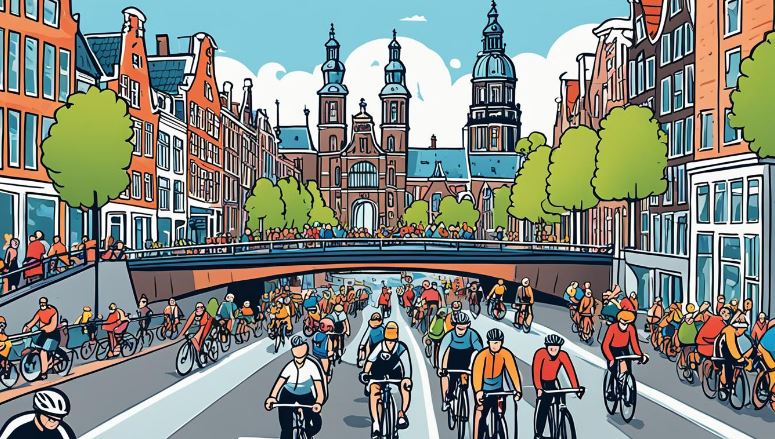
Demographics of Cyclists
The Netherlands' cycling culture is more than just numbers and stats. It shows clear trends in demographics [15]. Young people up to 30 lead the cycling trend, thanks to more education and city living [15]. The over-60s are also joining in, enjoying cycling for fun, thanks to better health, energy gels and electric bikes [15].
Adolescents and Young Adults Lead the Trend
In the Netherlands, young people are making cycling more popular [15]. They live in cities more and are in school, which makes them cycle more [15].
Growing Popularity Among Seniors
Seniors over 60 are also getting into cycling, thanks to better health, electrolyte supplement and electric bikes [15]. This has made cycling easier and more fun for them, so they're cycling more for fun [15].
But, not everyone cycles the same amount. People from non-western backgrounds cycle less than the Dutch [15].
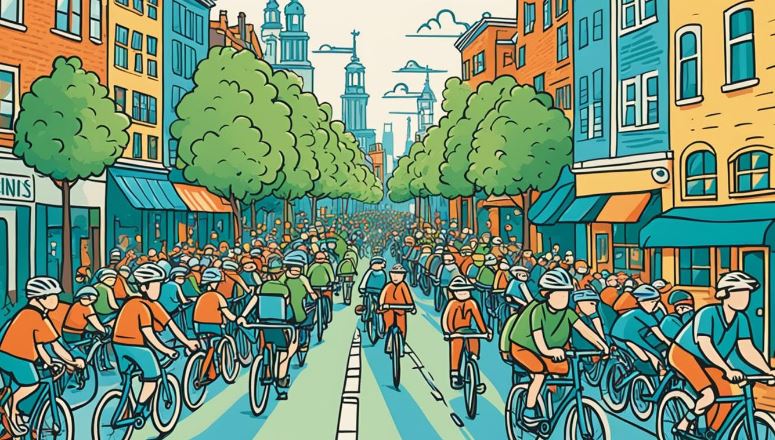
The Netherlands shows how important cycling is for getting around and for its values [15]. The trends show how mobility and society change over time [15,16,17].
Cycle Usage Statistics in Netherlands
The Netherlands is a dream place for cyclists, where biking is a big part of daily life [11]. In 2007, 34% of trips under 7.5 km were by bike, making it the top way to get around for short trips [11]. Bicycles are the go-to for trips under 7.5 km, with 70% of all short journeys, giving bikes a 27% share in transport [11]. For longer trips, 15% of people chose bikes for journeys between 7.5-15 km [11].
In 2020, people aged six and up in the Netherlands used bikes for about 4.4 trips a week, a bit less than the year before [1]. But, teens aged 12 to 17 cycled the most, making about 8.4 trips a week, and covered the most distance at 33 km per week [1]. The elderly, over 75, cycled the least, with just 14 km a week [1].
More people are using bikes for school, work, and fun, but shopping trips by bike have stayed the same [1]. Cycling makes up 26% of all trips in the Netherlands on average [11]. Cities like Amsterdam, Eindhoven, and Enschede keep a bike share over 30% thanks to good bike policies and roads [5].
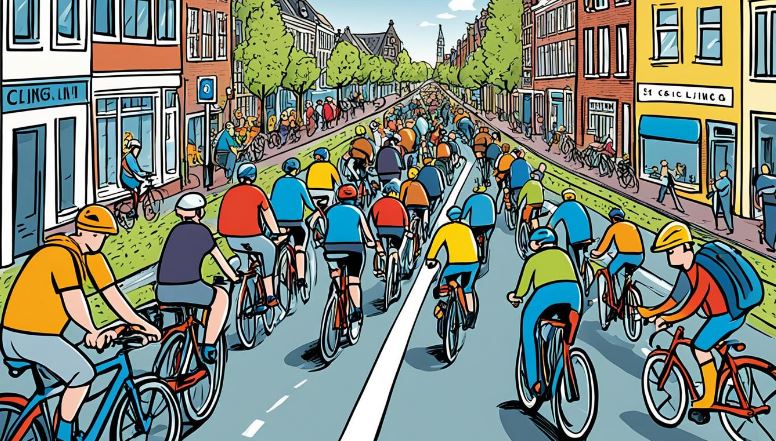
At the start of the last century, more Europeans started biking, but then car use rose and biking went down from 1950 to 1970 [11]. But, biking has picked up again in many cities since then [11]. The Netherlands leads in making biking a top choice for getting around [5].
E-Bike Adoption
The Netherlands has seen a big increase in e-bike use. In 2016, over 400 million e-bike trips were made, covering nearly 2 billion kilometres [18]. This rise has made more adults under 65 start using e-bikes [19]. Also, e-bikes are becoming more popular for commuting, with over half of all e-bike trips for work [20].
Rejuvenation of E-Bike Users
Even though older adults still travel the most by e-bike, younger people are starting to use them more [19]. E-bike users tend to be older and more women, but this is changing [19]. People from lower income groups and those with kids are also more likely to use e-bikes, showing they're becoming more popular across different groups [19].
E-Bikes for Commuting
More and more people are using e-bikes for their daily commute in the Netherlands. In 2017, 23% of e-bike trips were for work, up from 18% in 2013 [20]. E-bikes are becoming a popular choice because they are efficient and can replace cars and bikes for some trips [19]. The country's growing network of bike lanes makes e-bike commuting easier and more appealing [18].
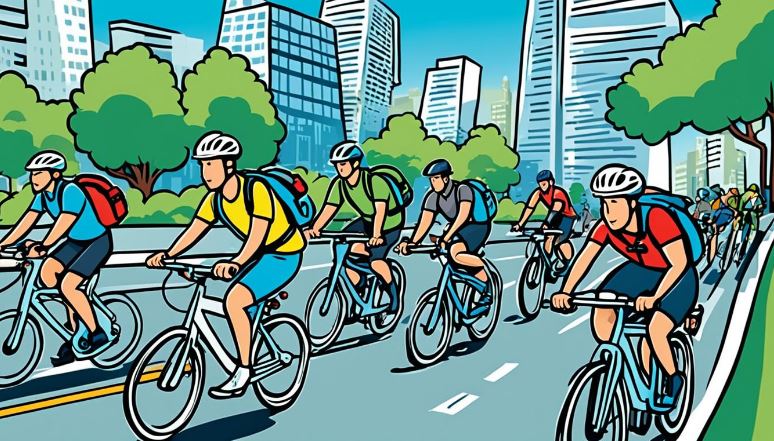
The Netherlands is becoming a leader in cycling, and e-bikes are key to its future of green transport [20]. E-bikes could help reduce car use, lowering emissions and making cities more mobile [20,18,19].
Benefits of Cycling
The Netherlands leads the world in using bikes for both health and the planet. Cycling is a key part of daily life, making the country a leader in green travel. Some benefits of cycling, such as improved physical health, reduced stress levels, and lower carbon emissions, have greatly improved the health and happiness of its people.
Environmental Impact
Cycling is a green way to get around, helping the Netherlands cut down on pollution. It's a big part of the country's effort to be more eco-friendly [21]. If everyone cycled as much as the Dutch, we could cut global carbon emissions by a huge amount [21].
Transportation is a big source of pollution, with cars and trucks being the main culprits [21]. Biking is a key way to fight this, making it essential for a cleaner future.
Health and Wellness
Besides helping the planet, cycling keeps the Dutch healthy [22]. A lot of trips in the Netherlands are by bike, which is great for health [22]. It saves lives and adds years to people's lives [22].
Cycling is so good for health, it's like a medicine. It's worth a lot to the Dutch economy, too [22,23]. People who cycle live longer, which is a big plus [23].
[22]Cycling saves thousands of lives each year in the Netherlands [22,23]. Most trips in the Netherlands are by bike, showing how popular it is [23]. The Dutch set a high standard for cycling around the world [23].
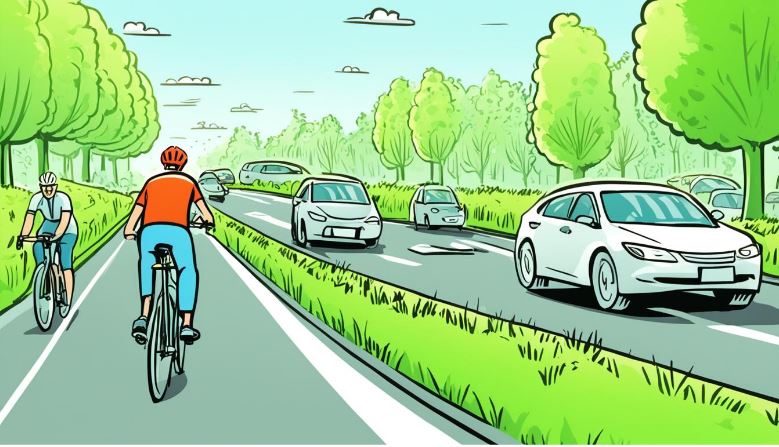
[22]Cycling adds billions to the Dutch economy every year, thanks to better health [22,23]. It's especially good for older adults, adding years to their lives [23]. Cycling is not just good for health; it also makes the air cleaner and reduces traffic jams [23].
The Netherlands shows us how great cycling can be for health and the planet. It's a lesson for other countries to follow, proving the power of biking.
Conclusion
The Netherlands leads the world in cycling, with bikes making up a quarter of daily trips. It has more bicycles than people, with 22 million bikes for 17 million residents [24]. This is thanks to decades of work on 32,000 kilometers of bike lanes [24] and huge bike parking areas [24]. The country's cycling culture is a model for others wanting to boost eco-friendly travel and quality of life.
Since the early 1900s, cycling has grown in the Netherlands. Now, it's a big part of daily life [24]. The country has worked hard to make roads safer for cyclists, from 2004 to 2019 [25]. This has helped make cycling a top choice for getting around for work, school, and fun.
As the Netherlands aims for a circular economy by 2050 [26], cycling will play a key role. The country recycles 80% of its waste [26] and uses less raw materials than the EU average [26]. Its cycling focus can guide other countries in cutting down on environmental harm and encouraging greener travel.






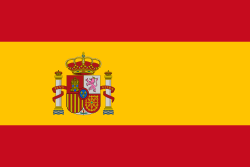
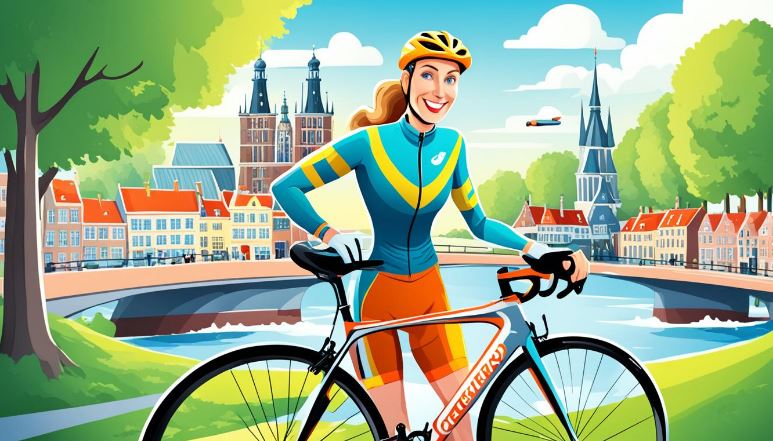
![[SV24] Soy Protein Powder](/web/image/product.product/1033/image_256)